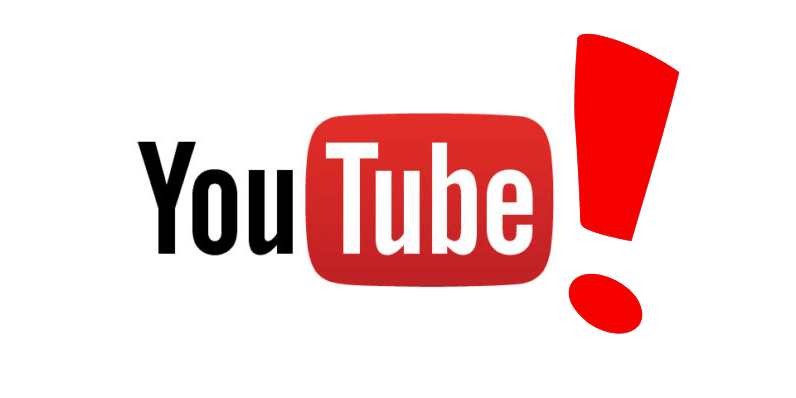If the term “YouTube sensation” sounds a bit inconsequential to you in the broader context of brands and influencers, you are not alone.
For many, the platform conjures visions of absurd home movies and fleeting wannabes recording pop songs. Sensations in the gaming community, particularly, have garnered scorn, despite being massively popular. According to Google, 95 % of gamers turn toward online videos to consume gameplay media. By 2013, the gaming group on YouTube was rising quicker than the overall platform in the U.S.
As a PR professional, I utilize YouTube to check out the photos and thought leadership attributes of brands and people. However last fall, I learned firsthand how influential YouTubers can be after the success of James Wright’s video review of Patti LaBelle’s Sweet Potato Pies. By partnering with Walmart, we maximized the popularity of the video and the chance to drive sales. Walmart’s sweet potato pie sales skyrocketed to one per second the weekend after Wright’s review was posted.
Another YouTuber who is recently caught my attention is PewDiePie. Otherwise known as Felix Kjellberg, he commands the attention of more than 42 million subscribers.
Clearly, there is something to be mentioned for PewDiePie. His content resonates with vast viewers, so it is more appropriate to think of him in terms of a brand, rather than a mere YouTube channel. With his unique personality, frequent and enthusiastic interactions with subscribers, and willingness to present his authentic self, PewDiePie has transitioned from filming his gameplay to writing a book and producing brief films for YouTube is new paid subscription service.
While I can not count myself among his following, I do believe PewDiePie has more than a few lessons to share about building and maintaining a strong brand image.
1. Create (and Stick to) a Consistent, Unique Voice
PewDiePie is the best strengths are that he knows his message and is not afraid to present his true self on camera to stand out. He’s made a brand empire from the ground up by giving his audience members something they can not get anywhere else. PewDiePie has a unique voice that resonates across all his diversified ventures. Whether you watch one of his YouTube videos or peruse his self-help parody book, This Book Loves You, you could instantly recognize his unique creative perspective.
Brand managers usually conflate consistency with stodginess, however, PewDiePie’s success proves that brand image does not have to feel manufactured and predictable. Consumers in the digital age are increasingly suspicious of cheesy, staid brand messages that they believe originate from out-of-touch executives. Fans relish PewDiePie’s videos for his raucous outbursts and palpable excitement.
2. Engage Your Viewers, Remembering That Interactions Reflect Back on Your Brand
Most people go through life just wanting to be heard, and firms that tap into this instinct could engage with customers in dynamic methods. It is similar to one of the main tenets of customer service: When somebody has a complaint, the first thing you do is listen and empathize, as that could be all that person needs.
PewDiePie regularly gives his viewers with chances for involvement: hosting frequent chat sessions, interacting with viewers in comment sections, and even permitting his subscribers to choose which games he plays. He understands brand is not something consumers merely, well, consume—it is something they live. In that vein, he engages his fans in a method that elevates his brand to lifestyle status.
Engagement is one of the most effective methods to drive brand loyalty, however, it’s also necessary to keep in mind that even the smallest interactions with customers are brand identity drivers. Therefore, it is paramount that all content carries your brand’s distinctive voice. You could spend millions of on a sophisticated advert campaign that effectively delivers your message, however, a single tweet can undermine your brand if the voice is not consistent.
3. Grow and Evolve, but Don’t Lose Sight of Your Roots
In some ways, YouTube is the great equalizer: Anybody could produce and publish content and see if it finds a viewer. PewDiePie leveraged this chance and created videos that provide unique value for his viewers and prove massively successful. While his brand changes somewhat over time and he shifts into new ventures, PewDiePie ensures that the foundation of his image is centered on being the goofy guy who makes must-see gaming videos on YouTube.
“My fans do not really care about professional high-end production videos … the fact that people know that it is just me making the videos—with no crew—has proved to be a winning concept,” PewDiePie said. “The thing that has made YouTube so successful is that you could relate to the people you’re watching to a much higher degree than to the people you see on TV. And that’s why I keep doing it all myself, although it would save me lots of work if I didn’t.”
The dynamics of a brand’s photo should all the time be evolutionary, not revolutionary. If PewDiePie had completely overhauled his brand identity and hired an entire film crew upon releasing a book, he would have confused his loyal followers. Organizations need to adjust their brand strategies as they change, however small tweaks over time won’t dilute their messages.
As PewDiePie’s empire grew, he kept his concentrate on building one of the strongest brands in media by remaining consistent and authentic, engaging with his subscribers, and communicating his value proposition effectively. These lessons are applicable to brands in any industry, and PewDiePie’s story proves that inspiring examples of brand management success aren’t confined to the likes of Apple and McDonald’s.


